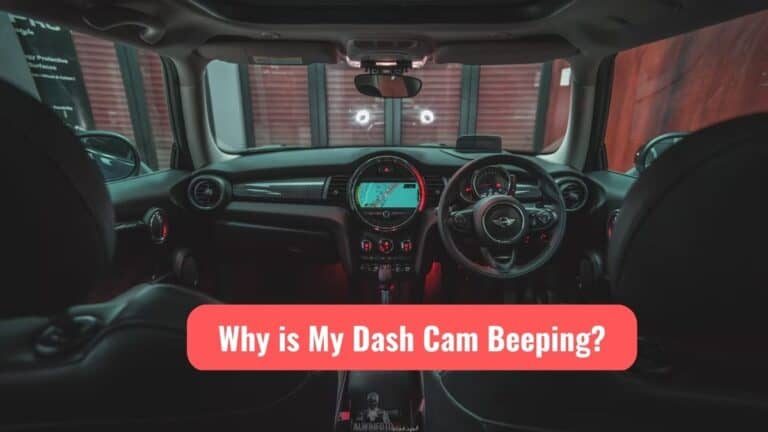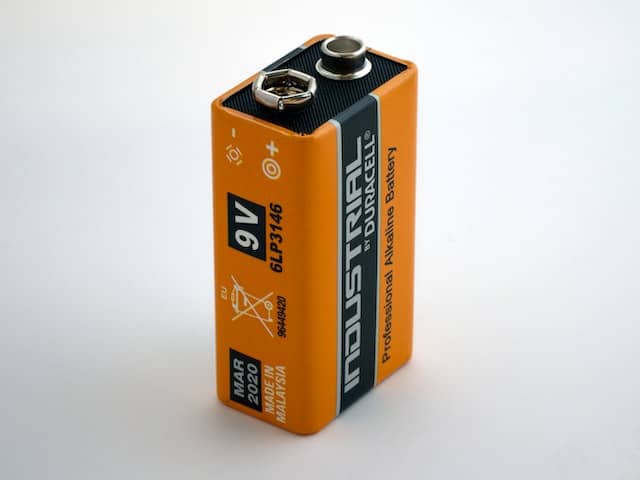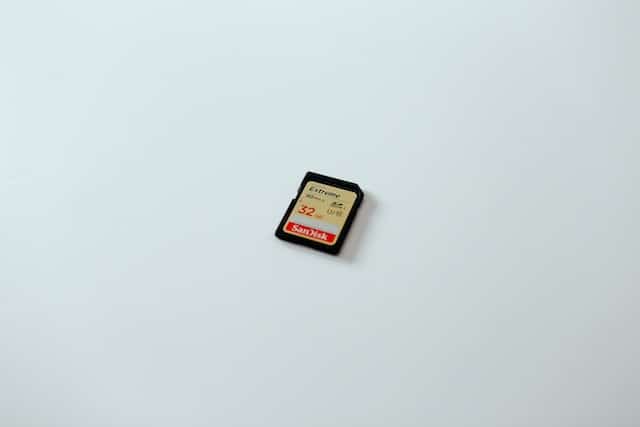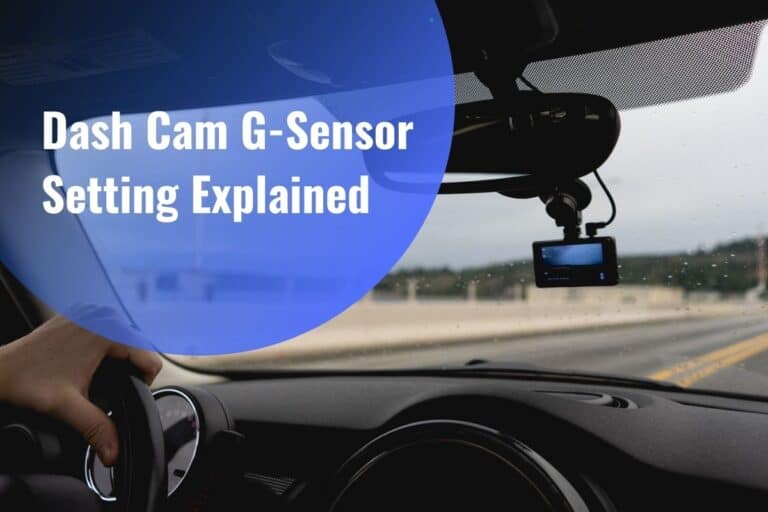Does Dash Cam Need WiFi?
Do you ever find yourself wondering if your dash cam needs WiFi? In today’s technology-driven world, WiFi connectivity has become a common feature in many devices, including dash cams. But is it really necessary for your dash cam to have WiFi?
This article aims to provide you with the answers and insights you need to make an informed decision.
Does Dash Cam Need WiFi?
Though it’s not necessary for dashcams to have WiFi, having it makes it easier to view and transfer footage as well as control your dashcams. So, it depends upon your needs.
WiFi-enabled dash cams offer several benefits that can enhance your overall driving experience. With WiFi connectivity, you can easily transfer videos and footage from your dash cam to other devices such as smartphones or laptops without the hassle of using cables or removing memory cards. This not only saves time but also allows for quick sharing and convenient access to recorded videos.
Additionally, some WiFi-enabled dash cams come with companion apps that allow you to remotely control and view live footage from your camera, providing peace of mind and added security while on the road.
However, it’s important to note that WiFi is not a necessity when it comes to choosing a dash cam. There are alternatives available for transferring video files such as USB cables or memory card readers. The decision ultimately depends on your individual preferences and needs.
To help you make an informed choice, this article will delve into the role of WiFi in dash cam functionality, explore alternative methods of transferring files, and highlight key factors to consider when choosing between a WiFi-enabled or non-WiFi dash cam.
So let’s dive in and discover whether or not your dash cam truly needs WiFi!
Benefits of WiFi-Enabled Dash Cams
You’ll love how WiFi-enabled dash cams make it super convenient to access and download your footage right from your smartphone or tablet! With a WiFi-enabled dash cam, you don’t have to worry about transferring the footage manually or using cables. Simply connect your device to the dash cam’s WiFi network and you can easily view, download, and share your videos with just a few taps on your screen.
This feature is especially useful when you need to quickly review an incident or share evidence with law enforcement or insurance companies.
In addition to the convenience of accessing footage wirelessly, WiFi-enabled dash cams also offer other benefits. Some models allow for real-time video streaming directly to your smartphone or tablet while driving. This means that you can monitor the road ahead or keep an eye on parked vehicles remotely. It’s like having an extra set of eyes with you at all times!
Furthermore, many WiFi-enabled dash cams come with companion apps that provide additional features such as GPS tracking, speed alerts, and parking mode notifications. These apps not only enhance the functionality of the dash cam but also offer a seamless user experience.
Overall, WiFi-enabled dash cams provide a level of convenience and accessibility that traditional dash cams simply can’t match. Being able to effortlessly access and manage your footage from anywhere using your smartphone or tablet is a game-changer in terms of ease-of-use and efficiency. So if you’re looking for a hassle-free way to handle your dash cam videos, investing in a WiFi-enabled model is definitely worth considering.
Alternatives to WiFi Connectivity
There are other ways to connect your dash camera. While WiFi connectivity offers convenient features such as live streaming and easy access to footage, it’s not the only option available to you.
Read Also: Best Dash Cam for Live Streaming: Our Top Picks
One alternative is using a mobile app that connects to your dash cam via Bluetooth. This allows you to control and view recordings directly from your smartphone.
Another option is utilizing an SD card or USB cable for data transfer. Most dash cams have a slot for an SD card, which can be used to store video files that can later be transferred to your computer or smartphone for viewing. Additionally, some dash cams come with a USB port that allows you to connect it directly to your computer or other devices for data transfer.
These alternatives provide reliable and effective methods of connecting your dash camera without requiring WiFi connectivity. By exploring these options, you can still enjoy the benefits of owning a dashcam while avoiding any potential limitations or drawbacks associated with WiFi reliance.
Understanding the Role of WiFi in Dash Cam Functionality
One convenient feature of many dash cameras is the ability to connect wirelessly, allowing you to easily access and control your recordings using a smartphone app. This wireless connectivity is made possible through WiFi technology, which enables the transfer of data between your dash cam and your phone without the need for any physical cables or connections.
With WiFi functionality, you can quickly and conveniently view your recorded footage, download or share specific clips, adjust camera settings, and even live stream video from your dash cam directly to your smartphone.
WiFi plays a crucial role in enhancing the overall functionality and usability of a dash cam. It provides a seamless connection between the device and your phone, enabling you to access important features and settings with ease. By connecting to your dash cam via WiFi, you no longer have to physically remove the memory card or connect the camera directly to a computer in order to retrieve or manage your footage. Instead, you can simply open the corresponding app on your smartphone and perform all these tasks wirelessly.
Additionally, WiFi connectivity allows for real-time syncing of videos or images captured by the dash cam onto cloud storage platforms or social media platforms if desired.
Overall, having WiFi capability in a dashcam greatly simplifies the process of accessing and managing recordings while adding convenience and flexibility to its usage.
Factors to Consider When Choosing a Dash Cam with WiFi
When choosing a dash cam with WiFi, it’s important to consider factors such as video resolution, storage capacity, and compatibility with your smartphone.
The video resolution of the dash cam determines the quality of footage it can capture. Higher resolutions like 1080p or even 4K provide clearer and more detailed videos, allowing you to easily identify license plates or other important details in case of an incident.
Further reading: Is 1080p dashcam enough?
Additionally, storage capacity is crucial as it determines how much video footage the dash cam can store before overwriting older recordings. Opt for a dash cam that offers ample storage space or supports external memory cards for extended recording time.
Compatibility with your smartphone is another essential factor to consider when choosing a WiFi-enabled dash cam. Most modern dash cams come with apps that allow you to connect your smartphone to the camera via WiFi. This enables you to view live streaming, access recorded videos, and adjust settings directly from your phone.
Ensure that the dash cam you choose is compatible with your specific smartphone model and operating system for seamless integration.
By considering these factors, you can select a WiFi-enabled dash cam that meets your needs and preferences while providing convenience and ease of use. Whether it’s capturing high-quality footage or accessing recordings on-the-go through your smartphone, having WiFi functionality in a dash cam enhances its overall functionality and usability.
So take into account these important features to look for in a dashcam when making your decision to ensure a smart choice that suits all your requirements.
Making an Informed Decision: WiFi or Non-WiFi Dash Cam
Choosing between a WiFi-enabled or non-WiFi dash cam can significantly impact your ability to conveniently access and manage recorded footage. With WiFi, you have the advantage of being able to wirelessly connect your smartphone or tablet to the camera. This means that you can easily view, download, and share videos directly from your mobile device without the need for any additional cables or memory cards.
Imagine being able to quickly show an incident video to a police officer or insurance agent right on the spot, without having to transfer files or wait until you get home. The convenience and ease of use offered by a WiFi dash cam can truly make a difference in your overall experience.
On the other hand, if you opt for a non-WiFi dash cam, you will need to physically remove the memory card from the camera and transfer it to another device in order to access and manage the recorded footage. This process can be time-consuming and may require additional equipment such as a computer with SD card reader capabilities. While non-WiFi dash cams may still provide high-quality video recording, they lack the convenience of instant connectivity that WiFi-enabled models offer.
Ultimately, choosing between a WiFi or non-WiFi dash cam depends on your personal preferences and needs. If you value convenience, easy access to footage, and seamless sharing options, then investing in a WiFi-enabled model is definitely worth considering. However, if you don’t mind taking extra steps to transfer files manually and prefer simplicity over advanced features, then a non-WiFi dash cam might suffice.
By understanding these differences and evaluating what matters most to you, you can make an informed decision that suits your specific requirements when it comes to managing recorded footage efficiently.
Conclusion
In conclusion, while WiFi connectivity may not be a necessity for a dash cam, it certainly offers numerous benefits that can enhance the overall functionality and user experience. The ability to wirelessly transfer and access footage directly from your smartphone or other devices allows for convenient and immediate viewing, sharing, and storage. This can be particularly useful in situations where you need to quickly provide evidence to law enforcement or insurance companies.
Moreover, WiFi-enabled dash cams often come with additional features such as GPS tracking and real-time notifications, which further enhance their usability. These features allow you to track your vehicle’s location, receive alerts for potential collisions or road hazards, and even monitor your car remotely. For those who value convenience and advanced functionality, choosing a dash cam with WiFi capabilities seems like a logical decision.
However, it is important to note that there are alternatives available for those who do not prioritize WiFi connectivity. Traditional dash cams without WiFi can still offer reliable video recording capabilities and serve their primary purpose of capturing crucial footage in case of accidents or incidents on the road. Ultimately, the choice between a WiFi-enabled or non-WiFi dash cam depends on individual preferences and needs.
In conclusion, when considering a dash cam purchase, it’s crucial to carefully weigh the pros and cons of WiFi connectivity. Assessing factors such as budget constraints, desired features, ease of use, and personal priorities will help make an informed decision. Whether you opt for a WiFi-enabled dashcam or choose a more basic model without this feature ultimately comes down to what suits your specific requirements best.








